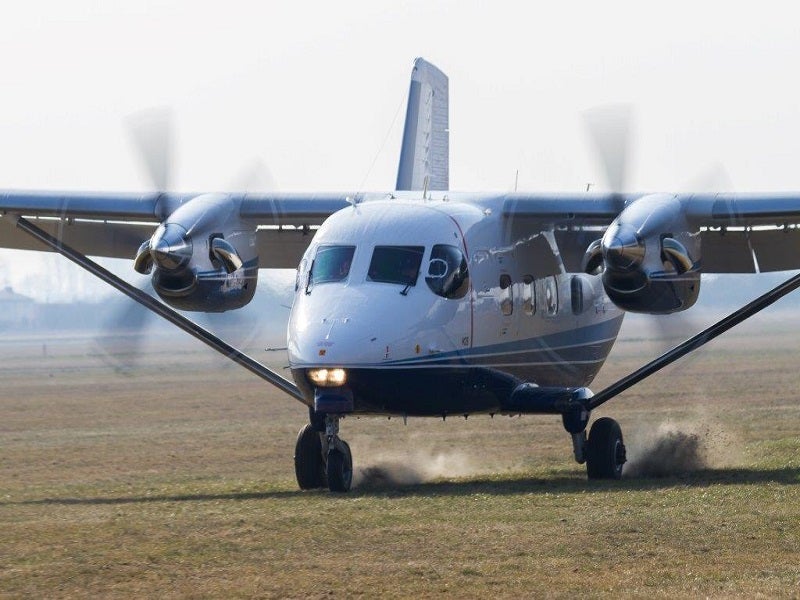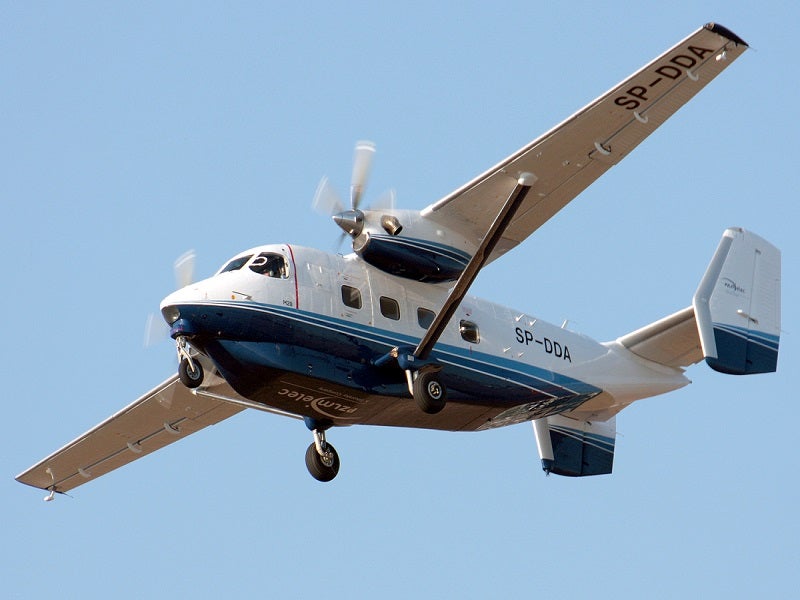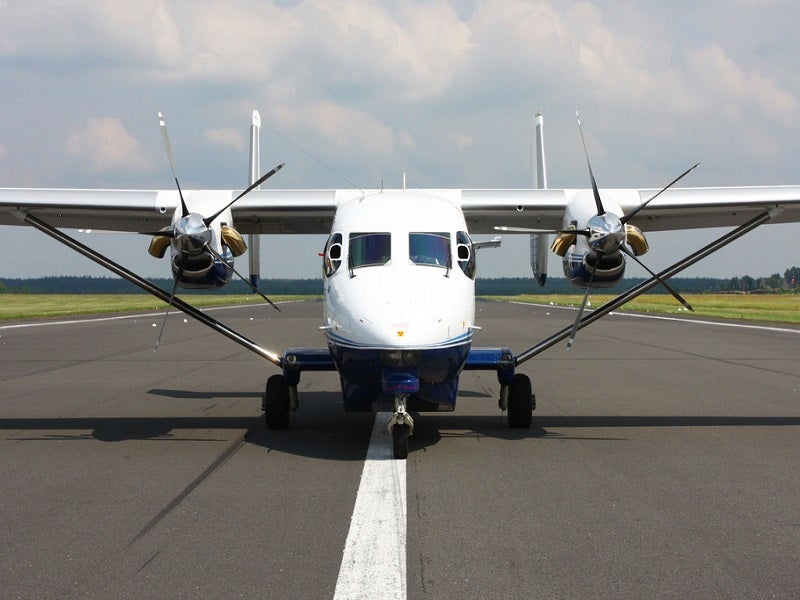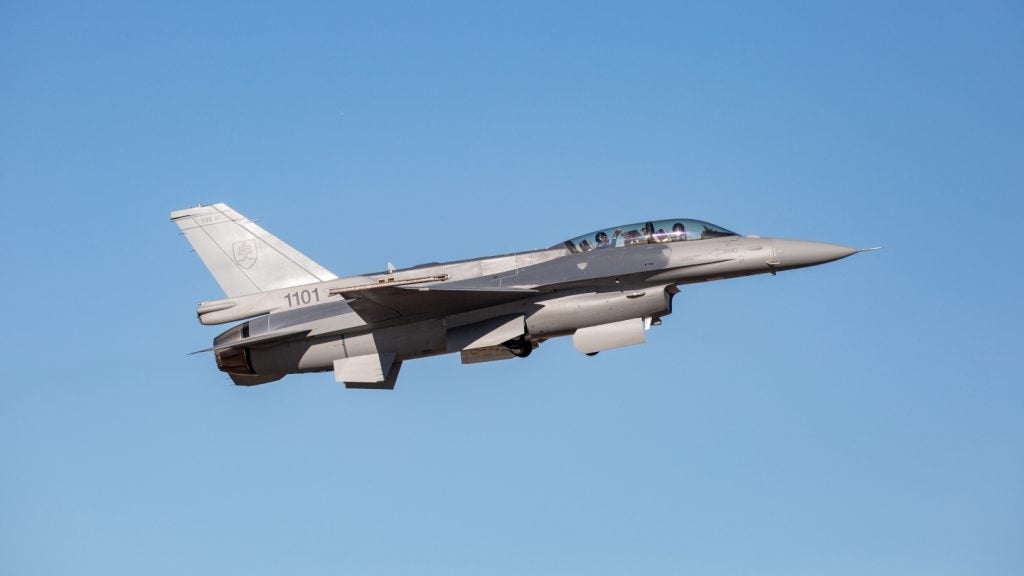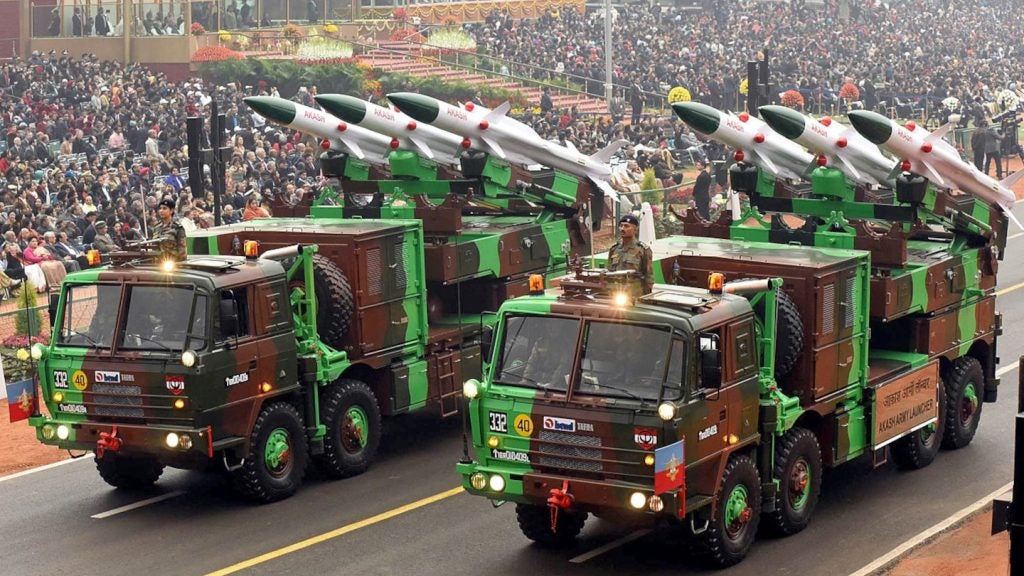The MC-145B Coyote is a multi-role strike aircraft developed by Sierra Nevada Corporation (SNC) and PZL Mielec, a Lockheed Martin company.
The aircraft is an enhanced version of the PZL M28 Skytruck, a twin-engine turboprop utility aircraft with short take-off and landing (STOL) capability. Manufactured by PZL Mielec, the M28 aircraft can operate in difficult environments, such as the deserts of Jordan, the subtropical forests of Kenya, and the harsh cold weather of Estonia.
SNC and PZL Mielec are partners in the US Special Operations Command’s (USSOCOM) Armed Overwatch programme. The MC-145B Coyote prototype is one of the five prototypes selected for the Armed Overwatch programme in May 2021, with five companies receiving contracts totalling $19.2m in value for the prototype demonstration.
The programme aims to procure 75 manned aircraft to perform close air support, armed intelligence, surveillance and reconnaissance (armed ISR), and precision strike missions.
SNC conducted a demonstration of the multirole capabilities of the MC-145B Coyote armed special operations transport aircraft at the Eglin Air Force Base, Florida, as part of the Armed Overwatch programme in July 2021.
MC-145B Coyote aircraft design and features
MC-145B Coyote aircraft has a rugged fuselage. Its high wing design coupled with the sturdy, fixed tricycle landing gear enables the aircraft to provide safe and dependable performance in austere conditions and on unprepared surfaces.
The highly modified aircraft has a cabin area, which is expected to support the deployment of large, palletised munitions such as Lockheed Martin’s cruise missile – the Joint Air-to-Surface Standoff Missile (JASSM). It also features an air-operable rear cargo ramp.
The aircraft can be rapidly reconfigured to perform casualty evacuation missions. It can support the self-deployment and resupply of forward operating locations without relying on airlift aircraft.
The modifications to the existing base aircraft include wing weapon pylons, additional fuel tanks, a retractable sensor turret, and internal weapons launchers. The layout of the aircraft allows for the arrangement of multiple sensor stations.
The MC-145B aircraft can accommodate 19 passengers. The rear cargo door has a length of 8.5ft (2.6m) and a width of 3.9ft (1.2m). The baggage compartment under the fuselage can carry a load of 662lb (300.3kg).
The aircraft has a wingspan of 72.38ft (22.05m), a length of 43ft (13.1m), and a height of 16ft (4.9m). The passenger cabin has a length of 17.25ft (5.26m), a width of 5.66ft (1.73m), and a height of 5.6ft (1.7m).
Mission capabilities
The aircraft can be configured to perform ISR, casualty evacuation (casevac)/medical evacuation (medevac), airdrop, paratroopers’ deployment, and tactical airlift missions. It features bio floors, medical crew, and six litters in medevac configuration.
Cockpit and avionics
The aircraft is equipped with a modern digital cockpit, which shares commonalities with the USSOCOM’s U-28A Draco (modified Pilatus PC-12) surveillance aircraft in training and logistics.
The cockpit features auto-throttle with crew safety enhancement, workload reduction system (speed, torque and loiter modes), and systems for controlling overtemperature/torque protection. Furthermore, the cockpit has a patented mechanical override safety feature.
The aircraft is installed with the Bendix King KFC 325 digital flight control system for autopilot operation with features such as altitude hold, altitude pre-select, Vortac/area navigation (VOR/RNAV), approach and glideslope, and reverse localiser.
Weapons compatibility of MC-145B Coyote aircraft
The MC-145B Coyote is equipped with wing-mounted and internal common launch tube portals, and ramps for weapon deployment. The four underwing hardpoints can hold AGM-114 Hellfire, AGR-20 advanced precision kill weapon system (APKWS), GBU-39 small diameter bomb (SDB), and precision-guided rockets.
The internal stores include a common launch tube (CLT), GBU-69 small glide munitions (SGM), AGM-176 Griffin precision-guided munition, Coyote unmanned aerial system (UAS), eight reloadable CLTs, ramp-launched stores, and ramp-launch capable CLT.
Payloads
The aircraft has a radio frequency (RF) transparent side door with a weight capacity of more than 300lb (136.07kg). The side compartment can carry distributed search and rescue (SAR), non-traditional communication intelligence (COMINT), and standoff sensor payloads.
The BRU-71 bomb rack pod has four wing pylons with 500lb (227kg) capacity and a standard 14in (0.35m) lug spacing. It can accommodate payloads such as SAR, as well as ISR and electronic warfare (EW) pods.
The forward belly pod has a length of 57in (1.4m) and a width of 57in (1.4m). It can hold a distributed SAR payload.
Furthermore, the aircraft features a retractable sensor payload area, which has a diameter of 25in (0.63m), a height of 30in (0.76m), and a load capacity of approximately 330lb (150kg). The sensor payloads that can be carried in the retractable sensor lift include electro-optical/infra-red (EO/IR), hyperspectral, SAR, and light detection and ranging (LIDAR) systems.
MC-145B Coyote engine and performance
The MC-145B aircraft is powered by two fully reversible Pratt & Whitney PT6A-65B turboprop engines with a rated power output of 1,100shp (820kW) each.
Its landing gear allows for safe landing on unimproved fields and grass. The multi-role strike aircraft has a landing and take-off distance of less than 1,000ft (304.8m).

